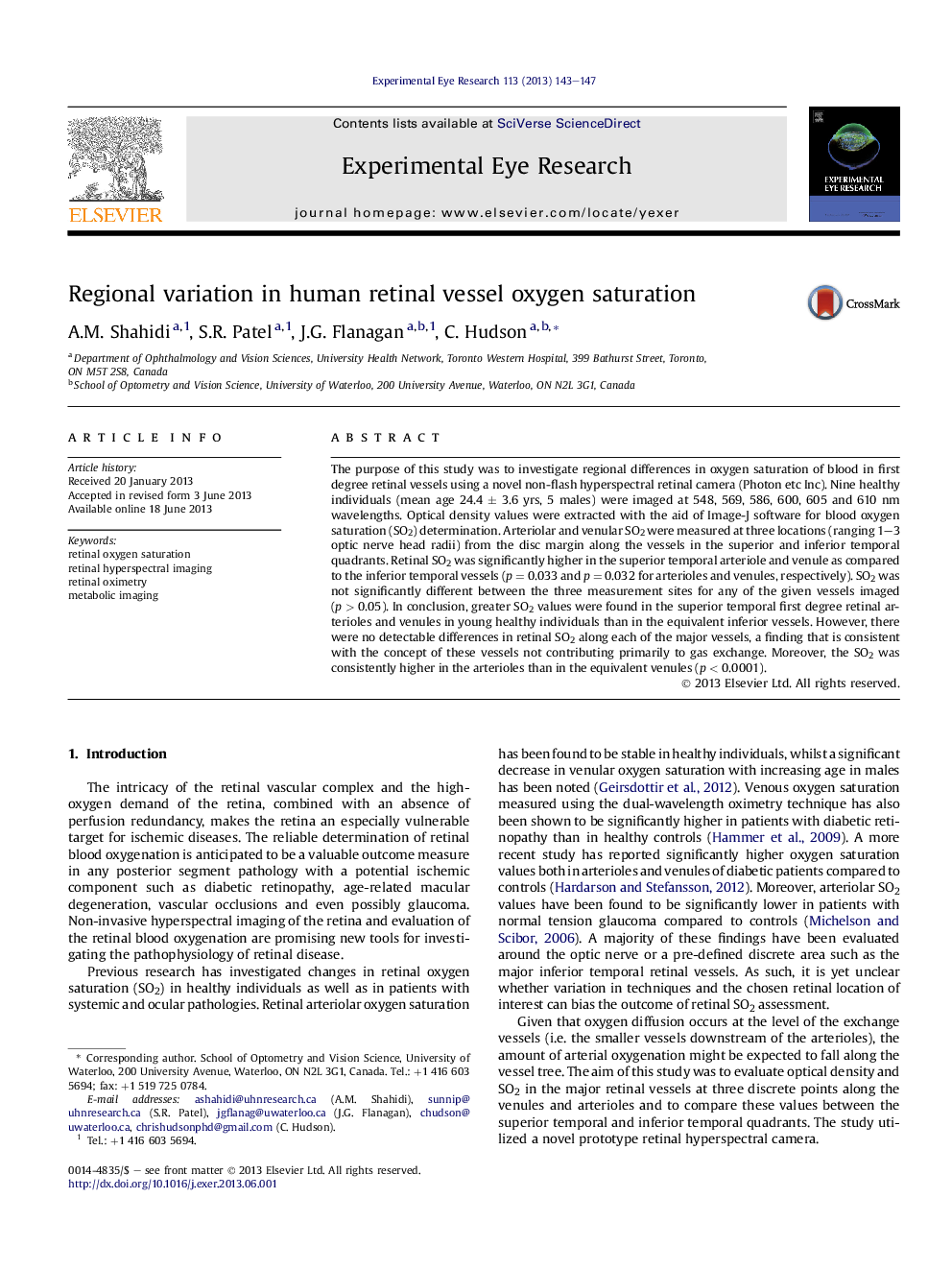| Article ID | Journal | Published Year | Pages | File Type |
|---|---|---|---|---|
| 6197275 | Experimental Eye Research | 2013 | 5 Pages |
â¢We examined regional retinal oxygen saturation using a novel hyperspectral camera.â¢SO2 was measured at three locations from the ONH along the vessels.â¢Measurements were taken in the superior and inferior temporal quadrants.â¢SO2 was not different amongst three regions of the vessel.â¢Superior temporal quadrant had higher SO2 as compared to the inferior.
The purpose of this study was to investigate regional differences in oxygen saturation of blood in first degree retinal vessels using a novel non-flash hyperspectral retinal camera (Photon etc Inc). Nine healthy individuals (mean age 24.4 ± 3.6 yrs, 5 males) were imaged at 548, 569, 586, 600, 605 and 610 nm wavelengths. Optical density values were extracted with the aid of Image-J software for blood oxygen saturation (SO2) determination. Arteriolar and venular SO2 were measured at three locations (ranging 1-3 optic nerve head radii) from the disc margin along the vessels in the superior and inferior temporal quadrants. Retinal SO2 was significantly higher in the superior temporal arteriole and venule as compared to the inferior temporal vessels (p = 0.033 and p = 0.032 for arterioles and venules, respectively). SO2 was not significantly different between the three measurement sites for any of the given vessels imaged (p > 0.05). In conclusion, greater SO2 values were found in the superior temporal first degree retinal arterioles and venules in young healthy individuals than in the equivalent inferior vessels. However, there were no detectable differences in retinal SO2 along each of the major vessels, a finding that is consistent with the concept of these vessels not contributing primarily to gas exchange. Moreover, the SO2 was consistently higher in the arterioles than in the equivalent venules (p < 0.0001).
